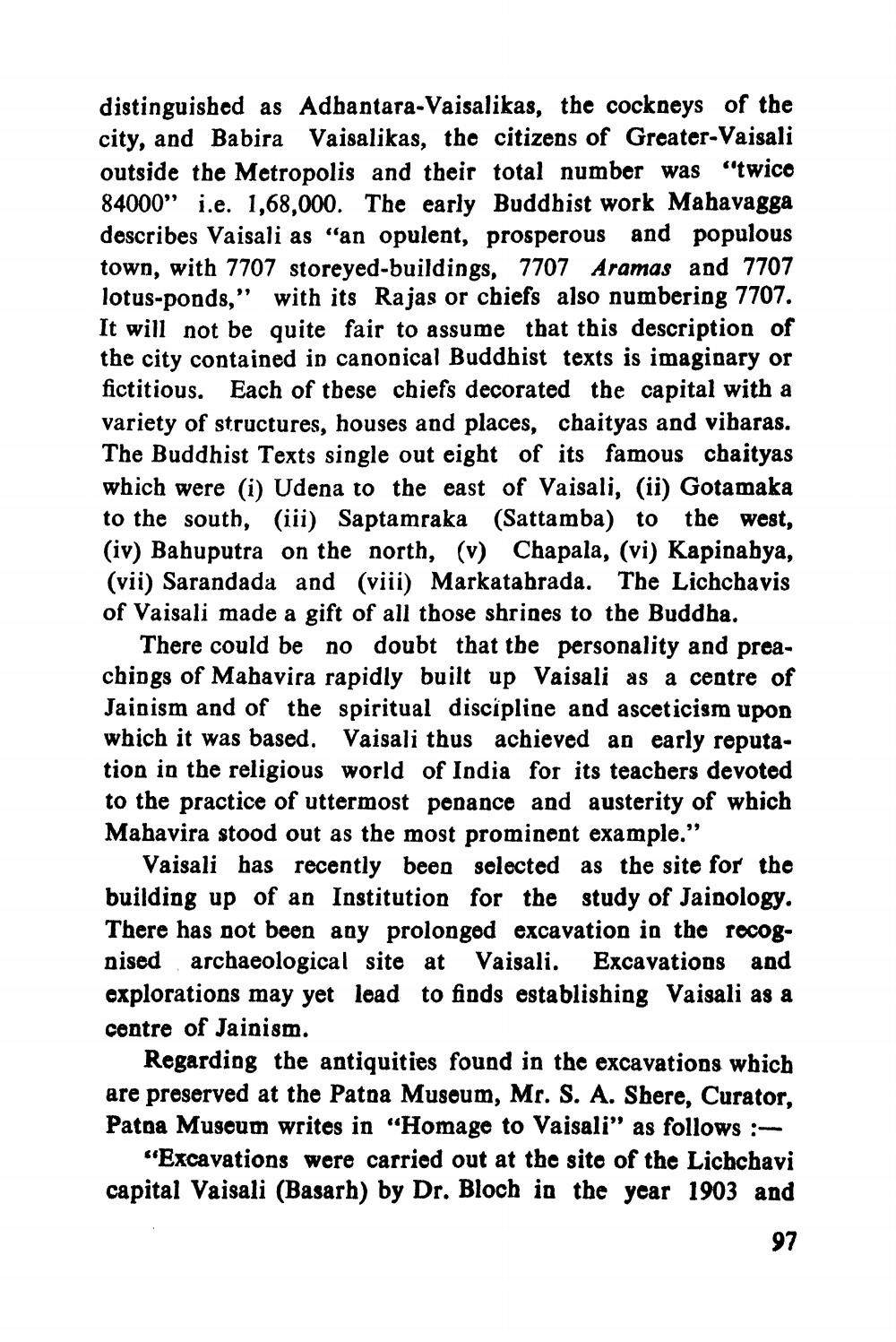________________
distinguished as Adhantara-Vaisalikas, the cockneys of the city, and Babira Vaisalikas, the citizens of Greater-Vaisali outside the Metropolis and their total number was “twico 84000" i.e. 1,68,000. The early Buddhist work Mahavagga describes Vaisali as "an opulent, prosperous and populous town, with 7707 storeyed-buildings, 7707 Aramas and 7707 lotus-ponds," with its Rajas or chiefs also numbering 7707. It will not be quite fair to assume that this description of the city contained in canonical Buddhist texts is imaginary or fictitious. Each of these chiefs decorated the capital with a variety of structures, houses and places, chaityas and vibaras. The Buddhist Texts single out eight of its famous chaityas which were (i) Udena to the east of Vaisali, (ii) Gotamaka to the south, (iii) Saptamraka (Sattamba) to the west, (iv) Bahuputra on the north, (v) Chapala, (vi) Kapinabya, (vii) Sarandada and (viii) Markatabrada. The Lichchavis of Vaisali made a gift of all those shrines to the Buddha.
There could be no doubt that the personality and preachings of Mahavira rapidly built up Vaisali as a centre of Jainism and of the spiritual discipline and asceticism upon which it was based. Vaisali thus achieved an early reputation in the religious world of India for its teachers devoted to the practice of uttermost penance and austerity of which Mahavira stood out as the most prominent example."
Vaisali has recently been selected as the site for the building up of an Institution for the study of Jainology. There has not been any prolonged excavation in the recognised archaeological site at Vaisali. Excavations and explorations may yet lead to finds establishing Vaisali as a centre of Jainism.
Regarding the antiquities found in the excavations which are preserved at the Patna Museum, Mr. S. A. Shere, Curator, Patna Museum writes in “Homage to Vaisali" as follows :
"Excavations were carried out at the site of the Lichchavi capital Vaisali (Basarh) by Dr. Bloch in the year 1903 and
97




